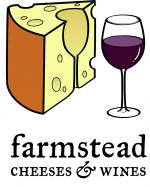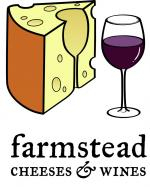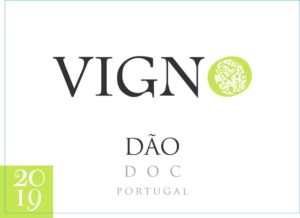December 2022 Bargain Club
SALEL & RENAUD Galinette – ORGANIC AND BIODYNAMIC
Vigno Dao branco – Organic
Guilhem Rosé – organic and biodynamic
duperray Gamay Glou Glou – organic and natural
Vigno Dao Tinto- Organic and Biodynamic
Scaia Rosso – Organic
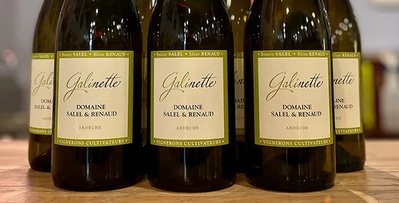 SALEL & RENAUD Galinette – ORGANIC AND BIODYNAMIC
SALEL & RENAUD Galinette – ORGANIC AND BIODYNAMIC
Salel & Renaud may be the most esoteric and “academic” of all the French growers that our new importer, Transparent, imports. For years, Elise Renaud and Benoit Salel worked in the vines and cellars under some of the biggest dogs in Cote Rotie, Hermitage, Provence, and Sancerre before starting their own farm in their native Ardèche. All wines are made by Elise Renaud; all farming is done by her husband, Benoit Salel.
The Ardèche sits on the western banks of the Rhône river and covers an important part of the northern Rhône vineyards while also bridging into the western side of the southern Rhône. Generally speaking, while the AOC-level appellations Saint-Joseph, Cornas, Saint-Peray, Côtes du Vivarais and some Côtes du Rhône vineyards are all located within this region, the IGP-level vineyards are found in the dry, scrubby foothills of the Cévennes mountains and along the river Ardèche valley. The narrow valley of the Rhône is often reserved for the more prestigious AOC wines. The department lies approximately 50km (30 miles) south of Lyon and 100km (60 miles) north of the Mediterranean, between the Rhône river to the east and the Massif Central plateau to the west.
Elise Renaud and Benoit Salel both hail from the Cevennes Ardechoises, where both of their families have tended the vine for many generations. While their elders sold all of their grapes to the local cooperative, Elise and Benoit decided to give it a go, making their own wines from their own vines. The two bought eight acres of vines in the rugged Ardeche region, and the rest is history. They have increased their holdings to 35 acres, and they have converted all of their vineyards over to organics.
Since 2007 Elise Renaud and Benoit Salel have been doing double-duty as ampelographers and archivists, working diligently to find, propagate, and replant old varieties which were once grown in the southern Ardèche. Like many of the more rural areas of France, the region’s indigenous/ancient grape varieties had long since fallen into oblivion. Along with the more familiar varieties that are found in appellations throughout the Rhône region, Elise and Benoit have patiently cultivated varieties such as Chatus, Dureza, Raisaine, and Picardan. For them, these indigenous grape varieties are the soul and identity of the Cévennes Ardéchoises. As Elise and Benoit say, “There is nothing to invent, the future is simply what has been forgotten.”
Their greatest passion is tracking down ancient, pre-phylloxera “heirloom” grape varieties in forests and long-neglected vineyards throughout the Ardèche, then propagating, replanting, and re-introducing them to modern drinkers by way of delicious wines. It’s a decade-long process not for the lazy or faint of heart, but the results are stunning: Light/medium-bodied, but hauntingly floral, meaty, and tooth-staining reds from grapes like Dureza and Chatus, plus waxy, saline, and exotically aromatic whites from the Raisaine and Picardan grapes — and we would be remiss in not mentioning their electrifying Grenache/Gamay blend “Mescladis” and gorgeously textural Roussanne/Vermentino “Galinette”. Low prices, handsome labels, attention-grabbing wines, and an exciting back-story — do not miss Salel & Renaud!
Their wines are brand new to the United States, and their La Galinette Blanc is my idea of the perfect white wine. What I like most about this wine is its elegance; White Rhones can often be a bit “clunky,” but this one is fresh, zesty, and precise. At just 12.5% alcohol, this blend of equal parts Vermentino and Roussanne shines with both Southern and Northern Rhone character. The Roussanne contributes heady scents and flavors of peach, lemon, and honeysuckle, while the Vermentino adds acidity along with notes of pink grapefruit, citrus zest, and herb. All in all, this all adds up to create a joyful and delicious drinking experience. This is a wine that would be great served with the classic Thanksgiving feast, but I don’t think we’ll have any left by the time Turkey Day gets here. Thus, enjoy now with roasted chicken and root vegetables or richer, oilier fish and seafood dishes. Or skip the food altogether and just drink this one with a good friend or loved one.
FREIRE LOBO VIGNO DAO BRANCO (ORGANIC)
Elisa Freire Lobo began her winemaking career in 1996, working and studying in the Bairrada region at Caves São João and the following year in the Douro with Anselmo Mendes. Being that she grew up in the Dão region, the oldest non-liqueur DOC in Portugal, she decided to return to her roots where she quickly became the very first woman winemaker in the region. In the ensuing years, she went on to work with many of the most respected producers of the region, including Casimiro Gomes, Carlos Rodrigues, Carlos Lucas, Alvaro Castro and the late Magalhães Coelho.
Elisa’s family has been growing grapes in the Dão for decades, so the next logical step would be to take over the family vineyards, which she did in 2010. Immediately, she began the conversion to organic farming, in order to respect the soil, plants and biodiversity of the 35 acres that she began farming. Between November and February, the vineyards are grazed by Bordaleiras sheep, which are typical of the mountainous Serra da Estrela where these vineyards lie at an elevation between 1500 and 2500 feet above sea level.
The sheep help control grass growth during wet months as well as adding essential natural fertilizer to the vineyards. Grasses and legumes are planted and encouraged the rest of the year as cover crops that improve the soil structure, increase fertility and help better manage the nutrients and limited water available in this poor, granitic soil. The cover crops stimulate biodiversity in the soil and vineyards, an essential part of long-term vineyard management. Only traditional Portuguese varietals are planted.
Reds include Touriga Nacional, Alfrocheiro, Tinta Roriz, Jaen, Alvarelhão, Baga, Bastardo, Tinto Cão, Camarate and Rufete. Whites include Encruzado, Cerceal, Bical, Fernão Pires, Malvasia and Barcelo. These are all harvested manually and some of their vineyards include ancient field blends, planted to virtually all of the above named varietals. The traditional methods of the vineyards flow directly into the winery where all fermentations are spontaneous using only indigenous yeasts.
50% Encruzado, 35% Bical, and 15% Cerceal. Encruzado has got to be my favorite Portuguese white grape these days. It’s got great structure and mouthwatering acidity for extended ageability, but fleet of foot, bursting with citrus and stone fruit flavors. Lightly creamy, fun and refreshing, with a backbone of lemon zest, pine needle, green apple, and tangy minerality. Wet slate, pomelo, pear – goes with any type of seafood.
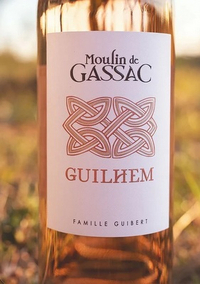 MOULIN DE GASSAC GUILHEM ROsé – ORGANIC AND BIODYNAMIC
MOULIN DE GASSAC GUILHEM ROsé – ORGANIC AND BIODYNAMIC
The producer, Mas de Daumas Gassac, has been variously described as ‘Lafite in the Languedoc’, ‘the only Grand Cru of the Midi’ and ‘exceptional’.
Several years back, the folks at Mas de Daumas Gassac began working with a neighboring cooperative in Sête to produce fun, full-flavored wines from the surrounding countryside and rocky hillsides. The goal is to produce wines grown under the strict vineyard and winemaking regimens employed at this unique domaine. Organic farming is de rigueur and the vinification is closely overseen by the Guibert family.
The results are splendidly aromatic wines that bring out the terroir of this Mediterranean region. The wines are named after St. Guilhem, the patron saint of the area where the village of St. Guilhem le Désert, one of the most stunningly beautiful villages in Europe, draws people from all over the world.
Their rosé is our best-selling rosé and perhaps our best-selling wine. It’s a blend of 50% Syrah, 50% Carignan. This delightful salmon-pink wine is produced via direct press, imparting a delicate, pale but vivid pink color. Fermented in temperature-controlled, stainless steel tanks. Aromatics of strawberries and crushed red fruit leap from the glass. In the mouth, it is fresh with excellent acidity, some mineral components, and good length. Very food friendly, it is a great companion to just about anything you want to throw at it.
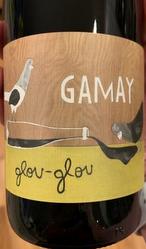 duperray Gamay Glou Glou – organic and natural
duperray Gamay Glou Glou – organic and natural
Jean-Baptiste Duperray runs his family estate and vineyards located in southern Beaujolais under the premise that the best wines are made in the vineyards. The vines are plowed to remove the weeds. In the cellar, Jean-Baptiste makes his wines without any additives — no sulfur dioxide, yeasts enzymes or other oenologic products. The wines are lightly filtered and bottled with minimal SO2 to ensure the best expression of terroir. He farms his land sustainably in order to ensure the purest expressions of varietal and terroir in his finished wines. Hand-harvested grapes are placed whole cluster in concrete tanks, where they undergo 8 months of natural carbonic maceration. The wine undergoes spontaneous fermentation on the skins, before being lightly racked.
Ripe and vibrant on the nose, with raspberry, bubblegum and cola notes mixing with some underbrush and earth. The palate is juicy and mouthfilling, but balanced by lively acidity. The red fruits are sweet and sour, but there are earthy, mushroom notes as well.
Glou-Glou” means “glug glug” which is both a motto for this wine and a call to action. Serve lightly chilled and don’t overthink the pairings here. Glou Glou is an expression given to a wine that is supremely drinkable: And Jean-Baptiste’s Glou Glou is drinkability incarnate. Made from 100% Gamay fermented whole-cluster in cement. Light purple color with expressive aromas of cherry, strawberry and a light note of spice. The palate is light and refreshing with soft tannins and vibrant acidity. Perfect for a picnic, light dinner or evening with friends.
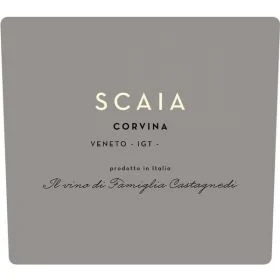 Scaia Rosso – Organic
Scaia Rosso – Organic
Scaia is a project of Tenuta Sant’Antonio in the Veneto, makers of wonderful Valoplicella, Ripasso and Amarone.
This family estate belongs to the four Castagnedi brothers—Armando, Paolo, Tiziano and Massimo. From a long family of grapegrowers, the siblings came together in 1989 to create their own estate winery. They planted 72 acres of vines on Monte Garbi, a rocky, chalky mountain that’s challenging to farm but that produces intense, uniquely flavored grapes.
While most Veneto bottlings come from large companies that buy fruit and juice from all over, the Castagnedis source fruit only from their parents’ vineyard and from their own low-yielding vines, which are handpicked (another rarity in the Veneto). All of the Scaia wines are single varietal, made from organically farmed grapes, and packaged in a unique (and reusable) glass cork closure.
Scaia Rosso is 100% Corvina, one of three red varieties native to Italy’s northeast Veneto region that provide the basis for three very different wines: bold, complex Amarone; juicy, mediumbodied Valpolicella; and lighter Bardolino. In the last century, industrialization took over much of Veneto’s vineyards; quality went down as yields, aided by chemical fertilizers and mass processing, went up. In the last few decades, a counter movement, led mostly by small, quality focused vintners has taken hold. This is a succulent, medium-bodied Italian red that’s ridiculously easy to drink. It’s fresh and supple, with plump cherry flavors edged in spicy and herbal notes that recall white pepper and rosemary.
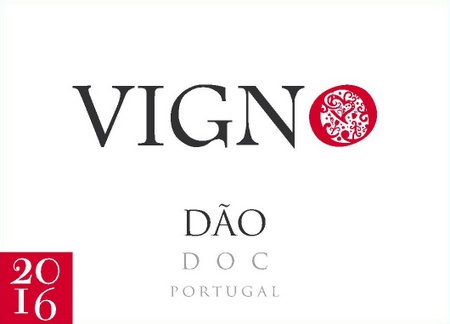 FREIRE LOBO VIGNO DAO TINTO -ORGANIC, BIODYNAMIC
FREIRE LOBO VIGNO DAO TINTO -ORGANIC, BIODYNAMIC
Elisa Freire Lobo began her winemaking career in 1996, working and studying in the Bairrada region at Caves São João and the following year in the Douro with Anselmo Mendes. Being that she grew up in the Dão region, the oldest non-liqueur DOC in Portugal, she decided to return to her roots where she quickly became the very first woman winemaker in the region. In the ensuing years, she went on to work with many of the most respected producers of the region, including Casimiro Gomes, Carlos Rodrigues, Carlos Lucas, Alvaro Castro and the late Magalhães Coelho.
Elisa’s family has been growing grapes in the Dão for decades, so the next logical step would be to take over the family vineyards, which she did in 2010. Immediately, she began the conversion to organic farming, in order to respect the soil, plants and biodiversity of the 35 acres that she began farming. Between November and February, the vineyards are grazed by Bordaleiras sheep, which are typical of the mountainous Serra da Estrela where these vineyards lie at an elevation between 1500 and 2500 feet above sea level.
The sheep help control grass growth during wet months as well as adding essential natural fertilizer to the vineyards. Grasses and legumes are planted and encouraged the rest of the year as cover crops that improve the soil structure, increase fertility and help better manage the nutrients and limited water available in this poor, granitic soil. The cover crops stimulate biodiversity in the soil and vineyards, an essential part of long-term vineyard management. Only traditional Portuguese varietals are planted.
Reds include Touriga Nacional, Alfrocheiro, Tinta Roriz, Jaen, Alvarelhão, Baga, Bastardo, Tinto Cão, Camarate and Rufete. Whites include Encruzado, Cerceal, Bical, Fernão Pires, Malvasia and Barcelo. These are all harvested manually and some of their vineyards include ancient field blends, planted to virtually all of the above named varietals. The traditional methods of the vineyards flow directly into the winery where all fermentations are spontaneous using only indigenous yeasts.
90 points, Wine Enthusiast: Fermented in open top tanks with foot treading, the wine is dense and concentrated. It has a plummy character that gives an open texture and richness. Acidity and tannins at the end are now balanced and the wine is ready to drink.
40% Touriga Nacional, 30% Jaen (Mencia), and 30% Alfrocheiro.
